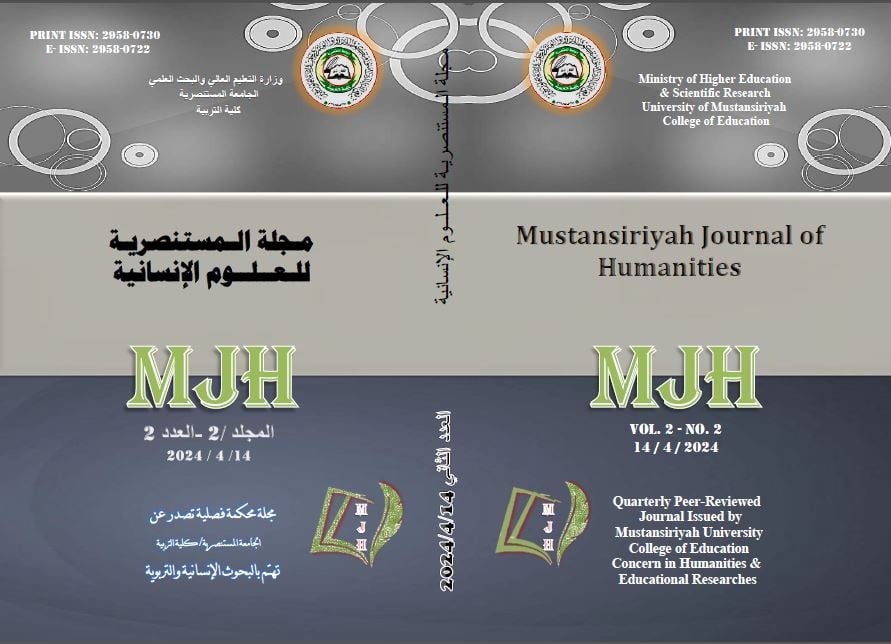الأثر السردي الديني في مقامات بديع الزمان الهمذاني
Keywords:
al-maqama, Hamadhani, religious, narrationAbstract
The prose creations of Al-Hamadhani gains widespread acclaim, attracting the attention of numerous scholars and writers. He is considered one of the prominent literary figures of the Abbasid era, profoundly influenced by religious heritage. Al-Hamadhani seamlessly incorporates religious texts into his works, evident in the clarity and eloquence of language, without hesitation in utilizing religious texts for their linguistic beauty and profound meanings. His sharp intellect play a crucial role in this seamless integration, supporting the intended meanings that Al-Hamadhani aimed to convey in his texts. He excels in handling religious themes within his maqamat, evident through the exploration of this impact, which highlights pages carrying the essence of Quranic beauty. Al-Hamadhani often commences some of his maqamat with a clear religious influence, making it apparent in his works as a whole. In these pages, I have presented a modest collection of what Al-Hamadhani drew upon, such as the aesthetics of the Noble Quran. The study also begins by introducing Al-Hamadhani himself, followed by a concise definition of maqamat. It further delves into the significance of narrative elements to connect maqamat with prose, elucidating the importance of narration. The discussion progresses to the core of the research, focusing on the religious impact that enhances descriptive excellence, expression, and sentence construction tailored to the context. Al-Hamadhani's explicit references to Quranic verses and his nuanced approach to conveying meaning are evident throughout the study.





